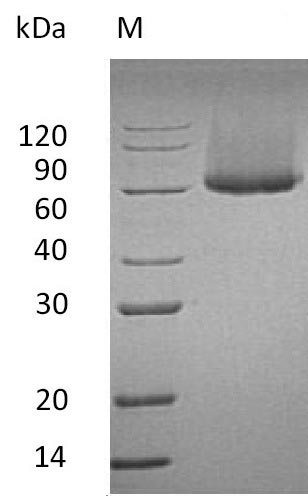Explore the benefits of Recombinant Mouse Glypican-1 (Gpc1) for your signal transduction research. Sourced from mammalian cells, this full-length mature protein, spanning the 24-529aa expression region, represents Gpc1, a cell surface proteoglycan that plays a pivotal role in cellular growth and development. The protein features a C-terminal 6xHis-tag, ensuring a purity of over 90% as demonstrated by SDS-PAGE. With endotoxin levels below 1.0 EU/µg, as determined by the LAL method, this lyophilized powder exhibits a functional ELISA ED50 of less than 10 µg/ml in its ability to bind Human FGFb. Trust Recombinant Mouse Gpc1 for your research endeavors.






